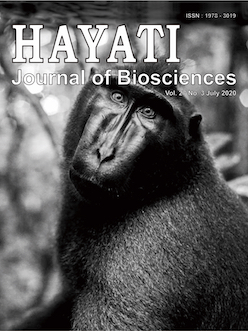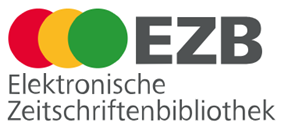Anatomical Properties and Near Infrared Spectra Characteristics of Four Shorea Species from Indonesia
Abstract
This study investigated the anatomical properties and absorbance characteristics of NIR spectra of four Shorea species from Indonesia. Macroscopic section revealed that Balau has similarity with Heavy Red Meranti, whereas White Meranti was almost identical with Light Red Meranti. All of the woods have diffuse porous and axial resin canals in tangential lines at the microscopic level. Original NIR spectra of Shorea species showed different absorbance characteristic. Wood density was assumed to be one of the factors that affected to the absorbances. Principal component analysis (PCA) of second derivative NIR spectra at the wavenumber 8,000-4,000 cm-1 (full) and 6,200-5,600 cm-1 (specific) showed different orientation among the Principal Component (PC) number. PC1, which contained highest spectral variation, had two closed clusters (1) Balau and Heavy Red Meranti and (2) White and Light Red Meranti at full spectral range. In contrast, the results at specific range were (1) Balau and White Meranti and (2) Heavy and Light Red Meranti. Hierarchical clustering dendrogram using PCA data from two spectral regions resulted in two types of clustering, the 8,000-4,000 cm-1 was somehow related to ‘density’, while the 6,200-5,600 cm-1 was grouped in ‘color’ information from visual inspection. From both spectral regions, k-nearest neighbour (k-NN) classification models revealed 100% accuracy in identification four Shorea species using NIR spectra.
Downloads
HAYATI J Biosci is an open access journal and the article's license is CC-BY-NC. This license lets others distribute, remix, tweak, and build upon author's work, as long as they credit the original creation. Authors retain copyright and grant the journal/publisher non exclusive publishing rights with the work simultaneously licensed under a https://creativecommons.org/


















.png) IPB University
IPB University Department of Biology
Department of Biology The Indonesian Biological Society
The Indonesian Biological Society 

